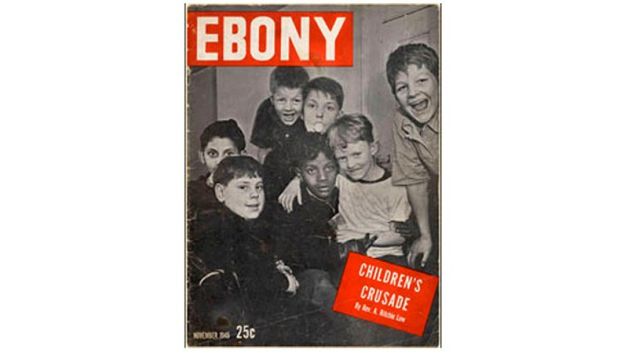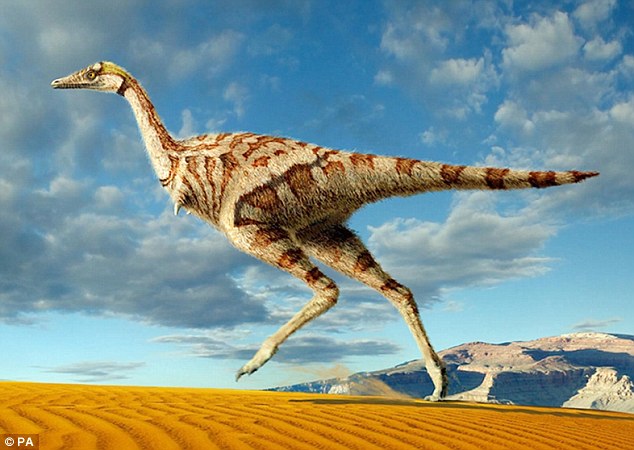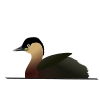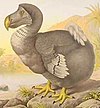
The thylacine, now extinct, is one of the largest known carnivorous marsupials, evolving about 4 million years ago. The last known live animal was captured in 1933 in Tasmania. It is commonly known as the Tasmanian tiger because of its striped lower back, or the Tasmanian wolf because of its canid-like characteristics. It was native to Tasmania, New Guinea, and the Australian mainland.
==========================================================
The passenger pigeon

The passenger pigeon or wild pigeon (Ectopistes migratorius) is an extinct species of pigeon that was endemic to North America. Its common name is derived from the French word passager, meaning "passing by", due to the migratory habits of the species

EXTINCT MAGAZINE


==========================================================
The passenger pigeon

The passenger pigeon or wild pigeon (Ectopistes migratorius) is an extinct species of pigeon that was endemic to North America. Its common name is derived from the French word passager, meaning "passing by", due to the migratory habits of the species

EXTINCT MAGAZINE
IN 1945, FIRST ISSUE OF EBONY MAGAZINE PUBLISHED BY JOHN H JOHNSON

Linhenykus is an extinct genus of alvarezsaurid theropod dinosaur from the Late Cretaceous of Inner Mongolia, China.


The New Zealand quail, or koreke, has been extinct since 1875. The male and female were similar, except the female was lighter. The first scientist to describe it was Sir Joseph Banks when he visited New Zealand on James Cook's first voyage. Terrestrial and temperate, this species inhabited lowland tussock grassland and open fernlands. The first specimen to be obtained by a European was collected in 1827 by Jean René Constant Quoy and Joseph Paul Gaimard on Dumont D'Urville's voyage.
The Tahiti rail, Tahitian red-billed rail, or Pacific red-billed rail is an extinct species of rail that lived on Tahiti. It was first recorded during James Cook's second voyage around the world (1772–1775), on which it was illustrated by Georg Forster and described by Johann Reinhold Forster. No specimens have been preserved. As well as the documentation by the Forsters, there have been claims that the bird also existed on the nearby island of Mehetia. The Tahiti rail appears to have been closely related to, and perhaps derived from, the buff-banded rail, and has also been historically confused with the Tongan subspecies of that bird.

The Jamaica giant galliwasp is a species of lizard in the Anguidae. It was endemic to Jamaica. It was last recorded in 1840 and is now possibly extinct, likely exterminated by introduced predators like mongooses. Recent surveys, while extensive, have not yet been exhaustive, given the difficulties of access into and around the Black River Morass, leaving room for some hope that the species may persist, albeit with a tiny population.


Snow Leopard
The snow leopard (Panthera uncia) is is a massive cat living in the mountain ranges of South and Central Asia and is one of the most endangered native animals in the Himalayas. With long, thick hairy fur, the snow leopard is basically anywhere from smoked gray to yellow tan in coloring. Its name comes from the white coloring of its belly. It is carnivorous and one of the most solitary animals in the world.
This endangered big cat is found mostly in the Indian states of Jammu and Kashmir and Himachal Pradesh. It can be spotted at the following national parks in India:
- Hemis: Ladakh
- Nanda Devi: Uttarakhand
- Dibang: Arunachal Pradesh
- Kibber: Lahaul Spiti
- Pin Valley: Himachal Pradesh
- Great Himalayan: Kullu, Himachal Pradesh.

Blackbuck
The blackbuck (Antilope cervicapra) is an ungulate species of antelope found in India. It is an herbivorous ruminant animal. This beautiful Indian antelope is near threatened as it is targeted on account of its skin and meat. Some of the main threats for the blackbuck are:
- Poachers
- Predators
- Habitat degradation
- Overgrazing
- Inbreeding
Also known as Kala Hiran in Hindi, this beautiful and majestic antelope species is found in Rajasthan, Haryana, Punjab (where it is the state animal). Odisha, Andhra Pradesh and Tamil Nadu. This species can be spotted in the following national parks:
- Guindy: Tamil Nadu
- Rollapadu: Andhra Pradesh
- Chilka: Odisha

Western Red Panda
The Western or Indian red panda (Ailurus fulgens fulgens) is a subspecies of the red panda, red cat-bear or lesser panda. It is also referred to as "red fox".
Residing in deciduous and coniferous forests, the endangered Indian red panda lives in temperate climates, in bamboo and hollow trees. It is an arboreal mammal found in the Eastern Himalayas. The red panda is among the endangered animals of India on account of:
- Inbreeding
- Poaching
- Habitat loss
- Population fragmentation
This is one of the most photogenic mammals in India, and ir can be found in 20 protected areas including Sikkim, Arunachal Pradesh, and West Bengal. National parks where the Indian red panda can be found include:
- Simlipal
- Khangchendzonga
- Namdapha
Other places include Nepal, Myanmar, and Bhutan. With a thick body and russet fur, the red panda is a truly unique creature that must be protected.

Indian Rhinoceros
The greater one-horned or Indian rhinoceros (Rhinoceros unicornis) is found in Assam, India. This endangered animal is a very large mammal, and it is the target of hunters who sell its horns at a high value. It has become a vulnerable species.
The Indian rhinoceros has a single black horn that is present in both sexes of the species. Rhinoceros are very big; in fact, this species is the largest land mammal of Asia only behind the Asian elephant.
Today, close to 3,000 Indian rhinos are found living in the wild, in their natural habitats. 2,000 of these are in:
- Manas
- Kaziranga
Both are national parks in Assam. Other areas where this endangered animal of India can be found include the Dudhwa Tiger Reserve and the Pobitora Wildlife Sanctuary.

Nilgiri Tahr
The Nilgiri tahr or ibex (Nilgiritragus hylocrius) is an ungulate stocky goat endemic to the Nilgiri Hills of South India. With coarse short fur and a bristly mane, this endangered Indian goat can be found in:
- Eravikulam National Park: Nilgiri and Anamalai Hills
- Periyar National Park: Palni Hills

Nilgiri Langur
The Nilgiri langur (Trachypithecus johnii) is a monkey of the lutung type found in the Nigiri Hills, just like the Nilgiri tahr. The range of the Nilgiri langure includes:
- Kodagu (Karnataka)
- Palani Hills (Tamil Nadu)
- Kerala
This is one of the thirteen species of monkeys in India, vulnerable because its fur and meat are valued and it is the target of hunters. Deforestation is another threat for this monkey. Its cousin, Gee's golden langur, is also an endangered animal of India.

Kashmir Stag
The hangul or Kashmir stag (Cervus canadensis hanglu) is an endangered animal. This kind of elk is recognizable because it has a light rump patch, without the tail. Antlers of the Kashmir stag constitute 5 tines.
The graceful hangul can be found in:
- Dachugam National Park
- Rajparian Wildlife Sanctuary
- Overa Aru
- Sind Valley
- Kishtwar and Bhaderwah forests
Found in the hilly state of Jammu and Kashmir, the hangul is targeted for its skin and flesh as well as its horns.

Lion-tailed Macaque
The lion-tailed macaque or wanderoo (Macaca silenus) is an Old World monkey that inhabits the same region as the Nilgiri tahr and langur, the Western Ghats. It has a silver-white mane from the cheeks to the chin.
Found in Kerala's Silent Valley National Park, Papanasam in Kallakad, Mundanthurai Tiger Reserve in Tamil Nadu and Karnataka's Siri Honnavara rainforests, the lion-tailed macaque is falling in numbers because of rising urbanization and habitat destruction.

Gaur
The Gaur or Indian bison (Bos gaurus) is the largest extant bovine in the world. Found in Southern and Southeast Asia, the Indian bison is threatened by poaching for trade to supply global markets. It is currently a vulnerable species.
The gaur can be found in Arignar Anna Zoological Park in Tamil Nadu and Chinnar Wildlife Sanctuary in Kerala, two of India's southernmost coastal states.
Here you can learn more about the differences between buffaloes, water buffaloes and bison; in fact, wild water buffaloes are also endangered.

Ganges River Dolphin
Scientifically called Platanista gangetica gangetica, the Ganges river dolphin is a subspecies of the endangered South Asian river dolphin. Therefore, it is a cetacean mammal.
Found in the Ganga-Brahmaputra-Meghna system and their tributaries in India, Ganges river dolphins are targeted by water development projects, industrialization, and pollution and resultant habitat loss. Here you can learn more about why is the South Asian river dolphin endangered.
Native to India, this freshwater dolphin is also found in Nepal and Bangladesh. Feeding on prey such as fish and shrimps which are dwindling in numbers, these species are blind by birth and cannot swim inside the water continuously, returning to the surface every 30 to 120 seconds.

Image: http://www.worldwildlife.org/species/ganges-river-dolphin
Gharial
The gharial, gavial or fish-eating crocodile (Gavialis gangeticus) is one of the three crocodilian species found in India. It is recognizable for its long and very thin snout, which in the case of male gharials has a pot-shaped boss at the tip.
The river Ganges is the habitat of the Indian gharial. This crocodile is also found in the Brahmaputra, Irrawady and Chambal rivers. The mass pollution in its habitat has led to the death of this species, which now is critically endangered.

Indian Vulture
The Indian vulture (Gyps indicus) is one of the largest flying birds in the Indian subcontinent. Like most vultures, it has a bald head, scavenges for food, moves in flocks and nests on trees and cliffs.
Indian vultures are another critically endangered species found in Uttar Pradesh, apart from Gujarat and Rajasthan. The Indian and the white-rumped vultures have suffered a devastating drop in population numbers because of accidental poisoning by a medical drug that was given to the cattle they scavenged on.

Indian Wild Ass
The Indian or Baluchi wild ass (Equus hemionus khur) can be found in Gujarat's Rann of Kutch and Ladakh in Sikkim. Their coat is sandy looking and varies from red to chestnut.
This species of ass is found living on grass, leaves, plants and fruits. It is currently a near threatened animal, as there are less than 5,000 individuals of Indian wild ass. Here you can find out what is the difference between a donkey, an ass and a mule.

Phayre's Leaf Monkey
The Phayre's leaf monkey or Phayre's langur (Trachypithecus phayrei) is a dominant monkey with a look as if it is wearing a monocle. This beloved species is one of the endangered animals of India, although is also lives in countries like Bangladesh, China, Laos, Myanmar and Vietnam.
As the name points out, Phayre's leaf monkey can be found in semi-evergreen forests and areas dominated by bamboos. These monkeys live mostly on immature leaves and bamboo.

Four-horned antelope
The four-horned antelope or chousingha (Tetracerus quadricornis) has four permanent crown-like horns above the head. It is currently a vulnerable species.
The beautiful four-horned antelope is the smallest bovid in Asia, with a slender frame and thin legs. With the brown coat and white underparts, this animal is found in Tamil Nadu and Maharashtra. Plants and grass make up the chousingha's main food, and it is a solitary animal.

Indian Pangolin
The Indian or thick-tailed pangolin (Manis crassicaudata) is among the endangered animals in India. It has the distinction of having no teeth and bad eyesight.
With a powerful set of claws and a horned, scaly body, the Indian Pangolin is found in Bandhavgarh National Park and Corbett, Gir. Feeding on insects and termites, the Indian Pangolin is endangered because of habitat loss and is a victim of illegal animal trade.

Barasingha
The barasingha or swamp deer (Rucervus duvaucelii) has twelve tined, crown-like horns above its head and a thick brown coat that turns darker during the mating season.
Barasinghas are a vulnerable species. Herbivores by nature, they are found in Kanha National Park in central India. It is the state animal of Madhya Pradesh.

Asian Elephants
Asian or Asiatic elephants (Elephas maximus) are highly intelligent animals and one of the largest mammals in the world. Smaller in size than African elephants, Asian elephants are recognizable by their small ears and dark gray to brown coloring. Here you can learn the differences between African and Asian elephants.
With an average dietary intake of 150 kg in a day, Asian elephants eat mostly rice, sugarcane, and grass. The Asian elephant can now only be found in:
- Corbett Tiger Reserve
- Rajaji National Park
- Nagarhole National Park
- Bandipur National Park
Although generally peaceful, Asian elephants can become dangerous. Here you can find out all about escaping from an elephant attack.

These are some of the endangered animals of India, with explanations and pictures. Did we miss your favorite? Tell us all in the comments section!
You can also learn more about threatened wildlife here:
| Common name\scientific name | Extinction date | Range | Image |
|---|---|---|---|
| Atlas wild ass Equus africanus atlanticus | 300 | North Africa | -- |
| Canary Islands giant rat Canariomys bravoi and Canariomys tamarani | Before 1500 AD | Spain (Canary Islands) |  |
| Giant aye-aye Daubentonia robusta | 1000 AD | Madagascar | -- |
| Giant fossa Cryptoprocta spelea[1] | before 1400 | Madagascar |  |
| Hipposideros besaoka The largest insectivorous bat of Madagascar | 10,000 BC | Madagascar | -- |
| Koala lemur Megaladapis sp. | 1420 AD | Madagascar |  |
| Lava mouse Malpaisomys insularis | Before 1500 | Spain (Canary Islands) | -- |
| Bibymalagasy Plesiorycteropus sp. | 200 BC | Madagascar | -- |
| Malagasy hippopotamus Hippopotamus sp.[2][3] | 1000 AD | Madagascar | |
| Megalotragus sp. Very large bovids | 10,000 BC | Africa | |
| Microgale macpheei Type of shrew tenrec | 100 AD | Madagascar | -- |
| North African elephant Loxodonta africana pharaoensis | 300 AD | North Africa |  |
| Pelorovis sp. Very large, African buffalo-like bovid | 2000 BC | Africa |  |
| Sivatherium sp. Large, okapi-like giraffid | 6000 BC | Africa |  |
| Common name\scientific name | Extinction date | Range | Image |
|---|---|---|---|
| Atlas bear Ursus arctos crowtheri | 1870s | North Africa |  |
| Aurochs Bos primigenius[4] | Unknown (Africa), 1627(Europe) | North Africa |  |
| Bluebuck Hippotragus leucophaeus[5] | 1799 or 1800 | South Africa |  |
| Bubal hartebeest Alcelaphus buselaphus buselaphus[6] | 1925 | North Africa |  |
| Cape lion Panthera leo melanochaitus | 1876 | South Africa |  |
| Cape serval Leptailurus serval serval | Unknown | South Africa | -- |
| Cape warthog Phacochoerus aethiopicus aethiopicus | 1871 | South Africa | -- |
| Kenya oribi Ourebia ourebi kenyae[7] | Unknown | Kenya | -- |
| Large sloth lemur Palaeopropithecus sp.[8] | 1500s | Madagascar |  |
| Lesser Mascarene flying fox Pteropus subniger[9] | 1864-1873 | Mauritius and France (Reunion) |  |
| Quagga Equus quagga quagga[10] | August 12, 1883 | Namibia and South Africa |  |
| Red gazelle Eudorcas rufina[11] | 1894 | Algeria | -- |
| Robert's lechwe Kobus leche robertsi[12] | Unknown | South Africa | -- |
| Western black rhinoceros Diceros bicornis longipes[13] | 1996 | Cameroon |  |
| Common name\scientific name | Extinction date | Range | Image |
|---|---|---|---|
| De Winton's golden mole Cryptochloris wintoni [14] | 1907 | South Africa | -- |
| Ethiopian amphibious rat Nilopegamys plumbeus[15] | 1927 | Ethiopia | -- |
| Wimmer's shrew Crocidura wimmeri [16] | 1976 | Côte d'Ivoire | -- |
Birds[edit]
| Common name\scientific name | Extinction date | Range | Image |
|---|---|---|---|
| Alaotra grebe Tachybaptus rufolavatus | 1985 | Madagascar |  |
| Aldabra brush-warbler Nesillas aldabrana | 1983 | Seychelles | -- |
| Ascension flightless crake Mundia elpenor | 1656? | United Kingdom (Ascension) |  |
| Ascension night heron Nycticorax olsoni | 1600s | United Kingdom (Ascension) | -- |
| Broad-billed parrot Lophopsittacus mauritianus | 1680 | Mauritius |  |
| Canary Islands oystercatcher Haematopus meadewaldoi | 1940 | Spain (Canary Islands) |  |
| Canary Islands quail Coturnix gomerae | Unknown | Spain (Canary Islands) | -- |
| Delalande's coua Coua delalandei | 1834 | Madagascar |  |
| Dodo Raphus cucullatus | 1662 | Mauritius |  |
| Eastern Canary Islands chiffchaff Phylloscopus canariensis exsul | 1986 | Spain (Canary Islands) | -- |
| Elephant bird Aepyornis sp. | 1600s | Madagascar |  |
| Lagrand's ground roller Brachypteracias lagrandi | Unknown | Madagascar | -- |
| Large Saint Helena petrel Pseudobulweria rupinarum | early 16th century | United Kingdom (Saint Helena) | -- |
| Madeiran wood pigeon Columba palumbus maderensis | 1924 | Portugal (Madeira) | -- |
| Mascarene coot Fulica newtoni | c.1700 | Mauritius and France (Reunion) |  |
| Mascarene grey parakeet Psittacula bensoni | 1764 | Mauritius | -- |
| Mascarene parrot Mascarinus mascarinus | 1834 | France (Reunion) |  |
| Mauritian duck Anas theodori | 1690s | Mauritius and France (Reunion) | -- |
| Mauritian shelduck Alopochen mauritianus | 1690s | Mauritius and France (Reunion) | -- |
| Mauritius blue pigeon Alectroenas nitidissimus | 1830s | Mauritius |  |
| Mauritius grey parrot Psittacula bensoni | 1764 | Mauritius and France (Reunion) | -- |
| Mauritius night-heron Nycticorax mauritianus | Late 17th century | Mauritius | -- |
| Mauritius owl Mascarenotus sauzieri | 1850 | Mauritius |  |
| Mauritius starling Cryptopsar ischyrhynchus | Holocene Epoch | Mauritius | -- |
| Newton's parakeet Psittacula exsul | c. 1875 | Mauritius |  |
| Red rail Aphanapteryx bonasia | 1700s | Mauritius |  |
| Réunion flightless ibis Threskiornis solitarius | Early 18th century | France (Réunion) |  |
| Réunion gallinule Porphyrio coerulescens | 1730 | France (Réunion) |  |
| Réunion kestrel Falco duboisi | 1700s | France (Reunion) | -- |
| Réunion night-heron Nycticorax duboisi | 1700s | France (Reunion) | -- |
| Réunion owl Mascarenotus grucheti | 1700s | France (Reunion) | -- |
| Réunion pigeon Nesoenas duboisi | 1705 | France (Reunion) | -- |
| Réunion shelduck Mascarenachen kervazoi | 1690s | France (Reunion) | -- |
| Réunion starling Fregilupus varius | 1850s | France (Réunion) |  |
| Rodrigues night-heron Nycticorax megacephalus | 1750s | Mauritius |  |
| Rodrigues owl Mascarenotus murivorus | 1750s | Mauritius | -- |
| Rodrigues parrot Necropsittacus rodericanus | 1750s | Mauritius |  |
| Rodrigues rail Erythromachus leguati | 1750s | Mauritius |  |
| Rodrigues solitaire Pezophaps solitaria | 1778 | Mauritius |  |
| Rodrigues starling Necropsar rodericanus | 1750s | Mauritius |  |
| Saint Helena crake Porzana astrictocarpus | Early 17th century | United Kingdom (Saint Helena) | -- |
| Saint Helena cuckoo Nannococcyx psix | late 18th century | United Kingdom (Saint Helena) | -- |
| Saint Helena dove Dysmoropelia dekarchiskos | After 1502 | United Kingdom (Saint Helena) | -- |
| Saint Helena hoopoe Upupa antaios | Early 16th century | United Kingdom (Saint Helena) |  |
| Saint Helena rail Porzana astrictocarpus | After 1502 | United Kingdom (Saint Helena) | -- |
| Seychelles parakeet Psittacula wardis | 1886 | Seychelles |  |
| Small Saint Helena petrel Bulweria bifax | After 1502 | United Kingdom (Saint Helena) | -- |
| Tristan moorhen Gallinula nesiotis | late 19th century | United Kingdom (Tristan da Cunha) |  |

No comments:
Post a Comment